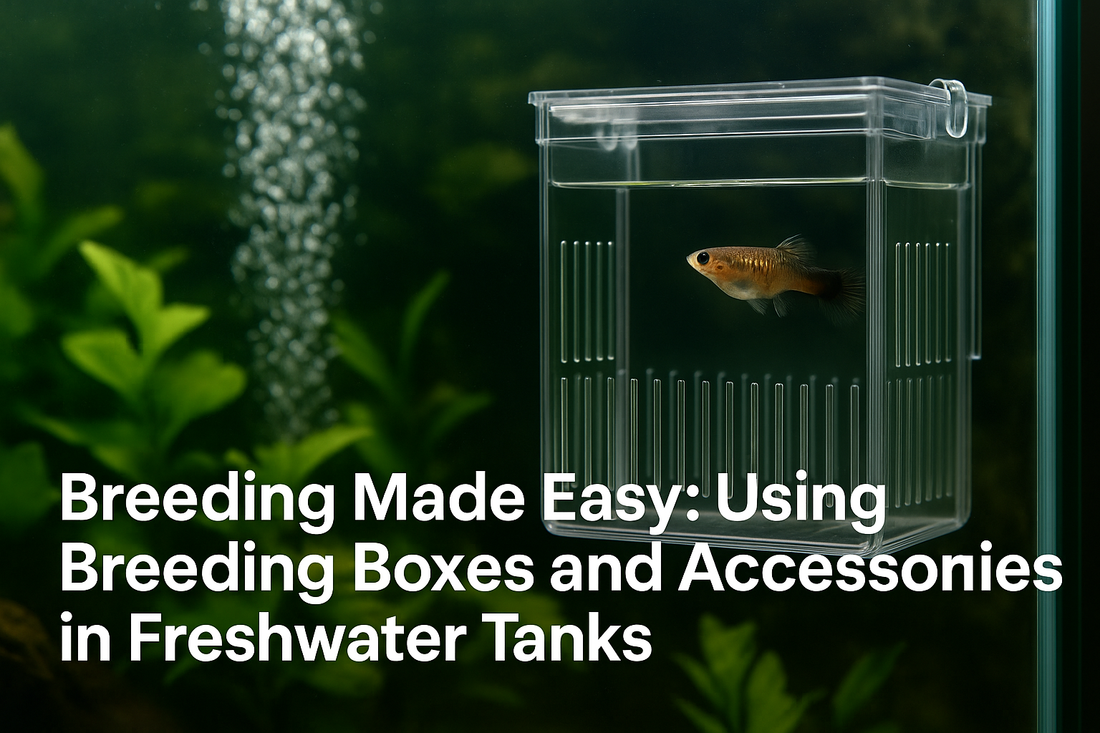Breeding fish is one of the most rewarding experiences in the aquarium hobby—but it also comes with challenges. Protecting fragile fry, managing territorial behavior, and providing safe spaces are all critical to breeding success. That's where breeding boxes and related accessories make a huge difference. In this guide, we’ll show you how to use breeding boxes properly and introduce essential tools to help you raise healthy fry with confidence.
What Is a Breeding Box?
A breeding box (also known as a breeding trap or isolation box) is a small, separated container placed inside the main tank. It provides a safe area for pregnant fish, new fry, or injured fish without requiring a separate aquarium setup. Most breeding boxes are designed with fine mesh or slotted sides to allow water circulation while preventing adult fish from reaching the fry.
Breeding boxes come in hang-on, floating, or suction-mounted varieties to fit different tank layouts and needs.
Why Use a Breeding Box?
Breeding boxes serve several important purposes:
- Protect Fry: Many fish will eat their own young if given the chance. Breeding boxes separate vulnerable fry from adults immediately after birth.
- Isolate Pregnant Females: Providing a stress-free environment for pregnant livebearers like guppies, mollies, or platies helps increase survival rates.
- Safe Recovery: Injured or bullied fish can recover in isolation without being harassed.
How to Set Up and Use a Breeding Box
1. Install the Breeding Box
Attach the breeding box to the side of the aquarium using suction cups, clips, or floaters. Ensure the box is well-secured and positioned in an area with gentle water flow to promote circulation without disturbing the inhabitants.
2. Monitor Pregnant Fish
Move heavily pregnant females into the breeding box shortly before they give birth. Look for signs like a boxy belly, darker gravid spots, or reclusive behavior.
3. Remove Adults After Birth
Once fry are born, promptly remove the mother to prevent accidental predation. Leave the fry in the breeding box until they are large enough to avoid being eaten in the main tank.
4. Maintain Clean Water
Feed fry tiny foods like baby brine shrimp or powdered fry food and perform small, frequent water changes to maintain pristine conditions inside the breeding box.
Must-Have Accessories for Breeding Success
- Fine-Mesh Nets: For gently moving delicate fry or females without injury.
- Fry Foods: Specialized micro-pellets, powdered food, or live foods help fry grow quickly and healthily.
- Small Sponge Filters: Gentle filtration that won’t suck up tiny fry, providing oxygen and clean water.
Common Mistakes to Avoid
- Leaving adult females in the box too long, causing stress.
- Overcrowding the box with too many fry without enough water movement.
- Neglecting to provide appropriate food for growing fry.
Breeding Accessories at Charterhouse Aquatics
Ready to start your breeding journey? Explore our Freshwater Accessories Collection to find high-quality breeding boxes, nets, fry foods, and sponge filters—all chosen for safety, performance, and ease of use.
Give your fry the best possible start—and make breeding an exciting success story in your aquarium!



